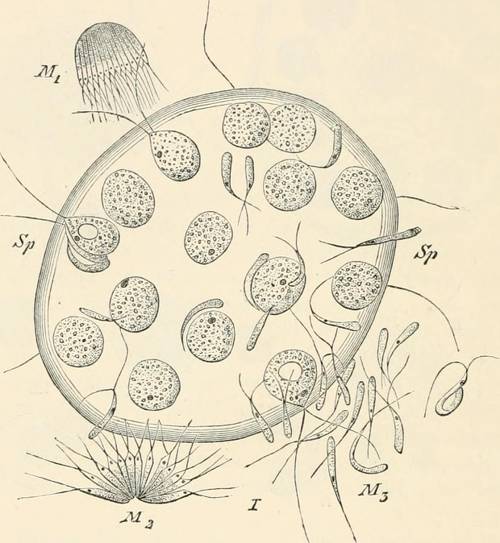
FAQ About Indoor Plant Stress Physiology

What is indoor plant stress physiology?
Indoor plant stress physiology refers to the study of how indoor plants respond to various stressors such as inadequate light, water stress, extreme temperatures, nutrient deficiencies, and pest attacks. It involves understanding the physical and biochemical processes that allow plants to survive and adapt to these adverse conditions.

What are common stressors for indoor plants?
Common stressors affecting indoor plants include insufficient light, overwatering or underwatering, temperature fluctuations, low humidity, poor soil quality, pest infestations, and nutrient deficiencies. These factors can negatively impact a plant’s growth, overall health, and ability to perform photosynthesis efficiently.

How do indoor plants physiologically respond to inadequate light?
In response to inadequate light, indoor plants may elongate their stems in a process called etiolation to reach for more light. Chlorophyll production may reduce, leading to pale leaves. Additionally, the plant's energy levels may drop, affecting its overall growth and vigor.

What are the signs of water stress in indoor plants?
Water stress in indoor plants is characterized by wilting leaves, dry or discolored leaf edges, stunted growth, and sometimes leaf drop. Overwatering can lead to root rot, while underwatering might cause leaves to become crispy and brown.

How can temperature fluctuations stress indoor plants?
Indoor plants stressed by temperature fluctuations often exhibit wilting, leaf drop, and browned leaf edges. Extreme temperatures can disrupt the cellular processes and enzyme functioning, leading to impaired growth and increased vulnerability to diseases.

What physiological changes occur in indoor plants under nutrient deficiencies?
Under nutrient deficiencies, indoor plants develop symptoms like chlorosis, where leaves turn yellow due to insufficient chlorophyll. Nutrient stress can also lead to poor root development, weak stems, and reduced flowering and fruiting as the plant reallocates resources to essential survival functions.

How does low humidity affect indoor plants?
Low humidity can increase transpiration rates in indoor plants, resulting in water loss and leading to wilting. It may also cause dry leaf tips and edges, reduced growth, and an increased risk of pest infestations as plants become stressed and weakened.

What are the biochemical responses of plants to pest stress?
In response to pest stress, indoor plants may produce defensive chemicals like phenolics and terpenoids to deter herbivores. They can also activate signal pathways involving hormone production, such as jasmonic acid, which helps enhance their resistance against pests.

Can air pollution stress indoor plants?
Yes, air pollution can stress indoor plants by damaging leaf surfaces and impairing photosynthesis. Pollutants like ozone, sulfur dioxide, and nitrogen oxides can cause visible injury symptoms such as chlorosis, necrosis, and leaf drop.

How does stress affect photosynthesis in indoor plants?
Stress affects photosynthesis in indoor plants by reducing the efficiency of light capture and conversion into chemical energy. Stressors like inadequate light, water deficits, nutrient depletion, and extreme temperatures can lower chlorophyll content and disrupt the photosynthetic machinery, diminishing energy production required for growth.

What is the role of stomata in plant stress physiology?
Stomata are small openings on plant leaves that play a critical role in regulating gas exchange and water loss. During stress conditions, such as drought or high temperature, plants may close their stomata to conserve water, but this also reduces carbon dioxide intake, affecting photosynthesis and growth.

How can stress-induced hormonal changes affect indoor plants?
Stress-induced hormonal changes can affect indoor plants by altering growth and development processes. Stress hormones like abscisic acid (ABA) are involved in promoting stomatal closure and activating stress response genes, whereas others like ethylene may induce leaf abscission or senescence under prolonged stress conditions.

Can indoor plants recover from stress?
Many indoor plants can recover from stress if the underlying problems are addressed promptly. This includes providing appropriate care such as adequate light, proper watering, and nutrient replenishment. Some stress may lead to long-term damage, but timely intervention often helps plants regain their health.

What preventative measures can be taken to reduce stress in indoor plants?
Preventative measures to reduce stress in indoor plants include maintaining consistent watering practices, ensuring adequate light exposure, keeping humidity levels optimal, and using quality potting mix. Regular monitoring for pests and signs of nutrient deficiencies also helps prevent stress-related issues.

How does repotting affect indoor plants physiologically?
Repotting can initially stress indoor plants as they adjust to new environmental conditions and soil. However, it often provides long-term benefits such as improved root space, better drainage, and nutrient availability, ultimately enhancing overall plant health and vigor.

Are certain indoor plant species more resistant to stress?
Certain indoor plant species, such as snake plants, peace lilies, and pothos, are more resistant to stress due to their adaptability to varying light, water, and humidity conditions. These species have developed physiological mechanisms that allow them to thrive in less-than-ideal environments.

What role do antioxidants play in plant stress physiology?
Antioxidants play a critical role in plant stress physiology by neutralizing reactive oxygen species (ROS), which are harmful byproducts of stress. By protecting cells from oxidative damage, antioxidants help maintain cellular integrity and improve a plant's ability to cope with stress.

How does overwatering lead to stress in indoor plants?
Overwatering stresses indoor plants by suffocating roots and reducing oxygen availability in the soil. This can lead to root rot, a condition characterized by mushy, discolored roots that impair water and nutrient uptake, resulting in wilting, yellowing leaves, and stunted growth.

Is stress physiology research applicable to improving indoor plant care?
Yes, research in stress physiology is highly applicable to improving indoor plant care. By understanding the mechanisms plants use to cope with stress, growers can adopt better practices to minimize stressors, enhance plant health, and optimize growth conditions for various species.

How does leaf abscission relate to plant stress?
Leaf abscission, the process of shedding leaves, is often a response to stress in indoor plants. It helps conserve resources by eliminating older, less efficient leaves when water, light, or nutrients are scarce, thereby improving the plant’s chances of survival.
